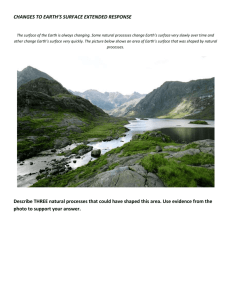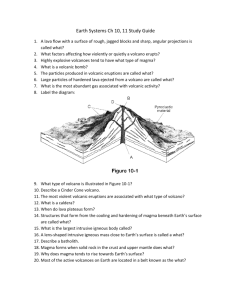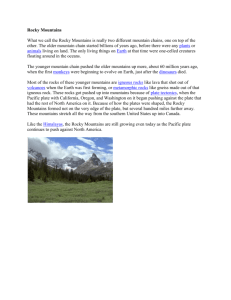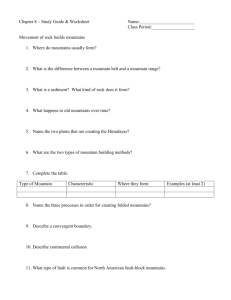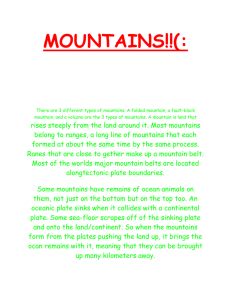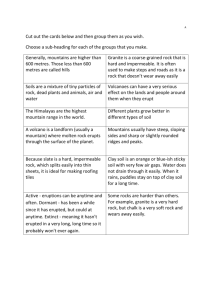Guide
advertisement
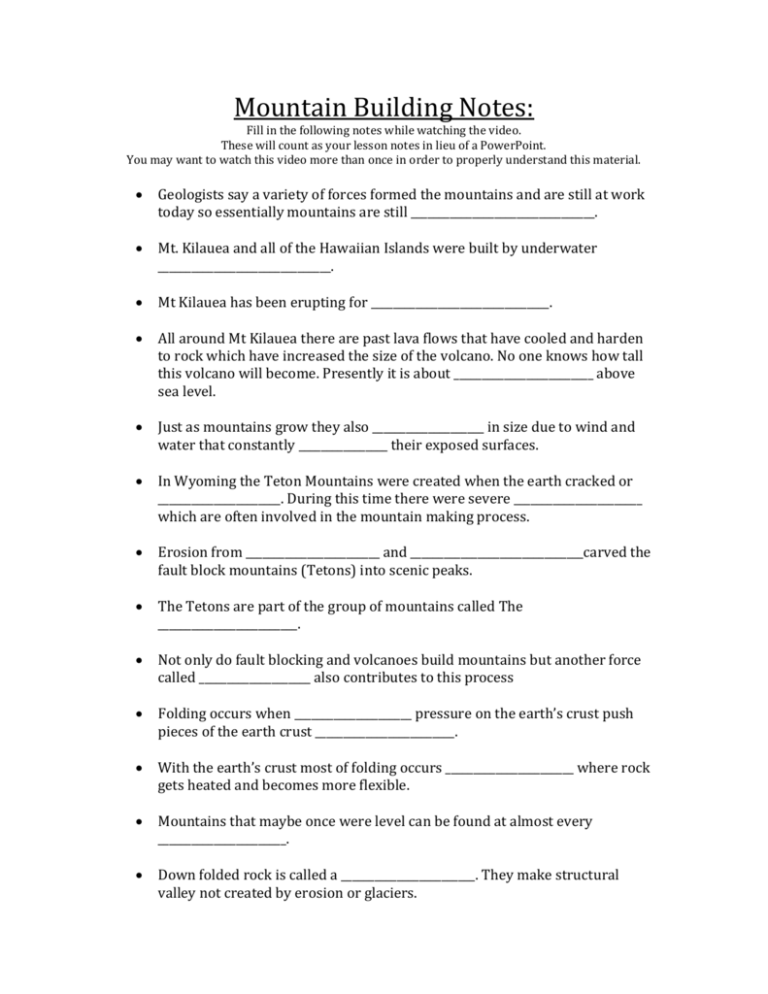
Mountain Building Notes: Fill in the following notes while watching the video. These will count as your lesson notes in lieu of a PowerPoint. You may want to watch this video more than once in order to properly understand this material. Geologists say a variety of forces formed the mountains and are still at work today so essentially mountains are still _________________________________. Mt. Kilauea and all of the Hawaiian Islands were built by underwater _______________________________. Mt Kilauea has been erupting for ________________________________. All around Mt Kilauea there are past lava flows that have cooled and harden to rock which have increased the size of the volcano. No one knows how tall this volcano will become. Presently it is about _________________________ above sea level. Just as mountains grow they also ____________________ in size due to wind and water that constantly ________________ their exposed surfaces. In Wyoming the Teton Mountains were created when the earth cracked or ______________________. During this time there were severe _______________________ which are often involved in the mountain making process. Erosion from ________________________ and _______________________________carved the fault block mountains (Tetons) into scenic peaks. The Tetons are part of the group of mountains called The _________________________. Not only do fault blocking and volcanoes build mountains but another force called ____________________ also contributes to this process Folding occurs when _____________________ pressure on the earth’s crust push pieces of the earth crust _________________________. With the earth’s crust most of folding occurs _______________________ where rock gets heated and becomes more flexible. Mountains that maybe once were level can be found at almost every _______________________. Down folded rock is called a ________________________. They make structural valley not created by erosion or glaciers. Up folded rock is called ___________________ . These form ridges and crests. A process called _________________________ was responsible for the intense bout of mountain building that we now call The Rockies. Geologists say the earth is broken into about 12 plates, which sit on the plastic (moveable) layer of the earth called the _____________________. Some plates spread away from one another, other slide by each other, and _____________________ head on. These collisions cause folding, faulting and uplifting. Collisions may also cause faults that allow _____________________ to reach the crusts surface which create a volcano Hawaii’s volcanoes lie over a _____________________________. The Sierras and Cascades are North America’s ______________________ mountain ranges. North America’s western mountains are younger and have the __________________ and most rugged peaks of this continent. The Appalachian Mountains are very _________________ and stopped growing about the time the Rockies were forming. Erosion has been grinding these mountains down. The Appalachian Mountains are facing the fate of every mountain to ____________________ and _____________________ to the sea. Most of the surface rock around the world today was formed from ___________________ sediment. At some point this rock will be thrust ___________________ and form new mountains, which renews the cycle of mountain building Mountain building is a _________________________ process that takes ______________________.





